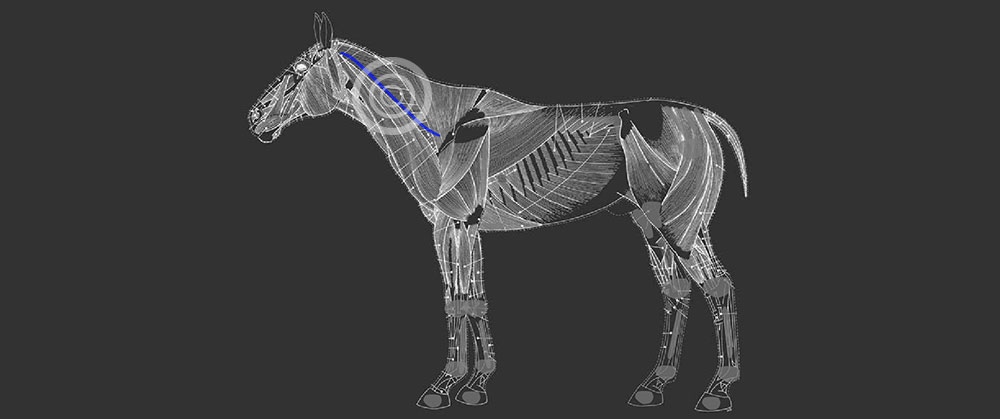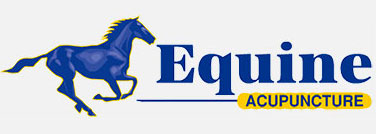Horse Head and Neck Disorders
Head and Neck Disorders

This region of the spine plays an important role in both rest and performance. When resting it needs to function to relax to allow the horse to properly graze on the ground but also to be able to respond quickly to stimuli with the flight and fight response. Horses can therefore hold a lot of hypertonicity and stress in the neck when at rest, this builds more stress on the neck region and the horse in general. One of the reasons given why zebras don’t get ulcers in the wild is because they have a mechanism of shivering and shaking after they have had the flight and fight response, this increases the action of the para-sympathetic nerves which relaxes the zebras so they can get back to grazing allowing the stomach to function properly, domesticated horses don‘t make use of this mechanism so the stress is held in the neck region.
There can be primary disorders of the framework structures of the neck causing spasm locally and effecting the neck’s movement, these can include traumas which cause tissue tears and strains or fractures of the vertebrae, congenital disorders of the vertebra such as the wobbler syndrome and developmental disorders seen in older horse where there is degenerative joint disease of the vertebral junctions. Pectoral and brachiocephalic tears commonly send the neck into a protective hypertonicity and spasm. However with most performance horses hypertonicity and reactivity of the neck is a secondary action of the body from stress and pain in other regions of the body. Pain from the forelimbs cause trigger points to develop in the neck, these trigger points are tightened regions of muscle tissue usually no bigger than a five cent piece which due to their spasm have a reduced blood flow and a build up of waste product, this makes them hyper sensitive to palpation, it is common for the horse to bite or kick as a reaction to palpation of these points. Now the issue in the neck with trigger points is that once one trigger point develops other satellite trigger points in the neck region develop making the trigger point picture look confusing, this is where the acupuncture work-up can sort through this and find the cause of the original trigger point and thus the cause of the neck hypertonicity. In the acupuncture work-up I use acupoint and trigger point palpatory reactivity as well as neck range of movement to find if the problem is primarily in the neck or secondary.
Strains of the head and neck region can commonly develop with the use of headstalls and tying the horse to a fixed object especially when breaking the horse in. Stress and trauma can manifest as pain and reactivity in the atlanto-occipital junction which causes the horse to become head shy where activities such as putting the bridle on can become quite challenging.
Dental issues are also another stressor to the neck and head region of the horse. Dental pain effects the horse while being ridden and when at rest and eating. If the dental pain is the cause of the neck hypertonicity than acupuncture is not going to be able to resolve the neck issue until the dentist has been through to resolve the dental pain.
Cervical Sternic Myleopathy (aka Wobbler Syndrome)
Compression of the spinal cord can occur in the cervical region inside the spinal canal of vertebrae and in their junctions. Bony growths can impinge onto the outer region of the cervical spinal cord causing compression. this causes symptoms of ataxia seen in the hindquarters which is due to the constriction of the hind limb proprioceptive nerves coursing this outer region.
Basic hind limb ataxia tests can be performed early on which test proprioceptive function both at exercise and at rest. This is important as therapies such as acupuncture can be of benefit providing the problem is picked up early on otherwise the
prognosis becomes poor. Diagnosis made by the veterinarian can be done through x-ray or more accurately through a myelogram.
Cervical Stiffness
This is quite a common syndrome is seen in all types of performance horses, the etiology can therefore be wide and varied. Trauma is a very common to the neck region from falls and getting cast in boxes, this can cause a protective spasm /hypertonicity of the superficial and deeper muscles of the cervical vertebrae, if left over time without treatment, a hypertrophy of the deeper cervical muscles can develop. Accompanying the trauma is the concussive stress from the forelimbs and local tears in the superficial muscles.
The deeper muscles of the neck such as the longis capitis, longis coli, intertransverse, scalene, atlanto-longissimus, cervical ventral serratus, multifidus and splenius basically lose their strength and ability to relax to allow for proper vertebral movement, this in turn allows scar tissue and bone build up around the vertebrae that can lead to spondylosis.
prognosis becomes poor. Diagnosis made by the veterinarian can be done through x-ray or more accurately through a myelogram.

